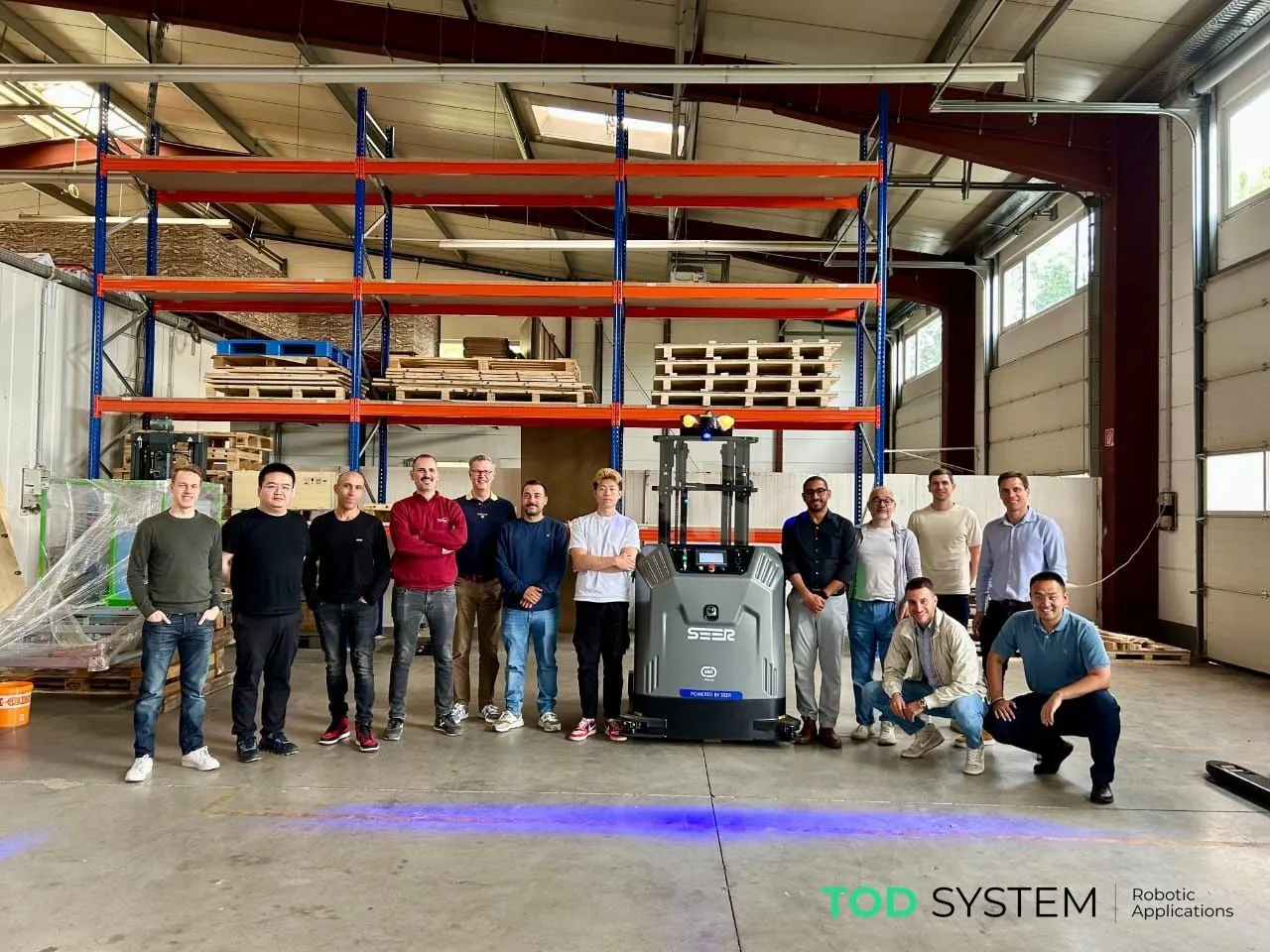In recent years, the logistics sector has undergone a significant transformation thanks to the introduction of collaborative robots, also known as cobots. Unlike traditional industrial robots, cobots are designed to work in synergy with human operators, improving efficiency, safety and productivity in material handling and palletising operations. Let's see how cobots can optimise palletising processes.
1. Palletising automation
Cobots are able to automate the palletising process, reducing the time needed to organise and store goods. They can be programmed to handle different stacking patterns, optimising available space and ensuring stable loads. Thanks to advanced robotic arms, the cobots can adapt to different types of goods, from standard pallets to more complex configurations.
The adoption of automated palletising enables companies to speed up logistical processes, improving accuracy and reducing errors. In addition, the ability to programme the cobots to recognise different types of products allows for more efficient organisation, avoiding damage due to incorrect placement.
2. Increased Safety in the Workplace
Cobots are equipped with advanced sensors and safety technologies that enable them to detect the presence of human operators and adapt their behaviour accordingly. This reduces the risk of injuries in palletising operations, which often involve heavy lifting and repetitive movements.
The risk of accidents in warehouses and distribution centres is greatly reduced thanks to cobots, which can be programmed to stop immediately in the event of obstacles or sudden movements. This technology not only provides a safer working environment, but also improves the well-being of operators by reducing physical fatigue.
3. Optimisation of Storage Space Management
Thanks to their precision, cobots can stack materials more efficiently, reducing the risk of errors and making better use of available warehouse space. The possibility of programming different palletising configurations enables more effective organisation and a reduction in waste.
The integration of cobots into warehouse management systems (WMS) enables real-time stock control and optimisation of space allocation. This leads to a reduction in costs related to storage errors and improves responsiveness to fluctuations in demand.
4. Reducing Operating Costs
The use of cobots in palletising reduces labour-related operating costs and human error. The initial investment is quickly amortised through reduced downtime, increased productivity and minimised product damage due to incorrect stacking.
A further economic advantage comes from the ability to operate 24/7, without the need for breaks or rest shifts. This allows companies to increase throughput and improve supply chain management, ensuring a faster and more efficient service.
5. Flexibility and Scalability
One of the main advantages of cobots in palletising is their ability to be easily reprogrammed to handle different types of goods and load configurations. This makes them particularly useful for companies with a wide variety of products and ever-changing logistical needs.
Modern collaborative robotics solutions offer intuitive interfaces that allow easy programming even for unskilled operators. This allows companies to quickly adapt to market changes and implement new logistics strategies without having to invest in lengthy and costly training processes.
6. Integration with Industry 4.0
Cobots integrate seamlessly into Industry 4.0 digital systems, connecting to ERP and cloud software to monitor and optimise palletising operations. This enables more effective management of workflows and greater visibility over the entire logistics process.
Through the use of artificial intelligence and predictive analytics, cobots can dynamically adapt to changes in demand and production needs. Companies can thus improve resource planning and reduce the risk of disruptions in the supply flow.
7. Sustainability and Environmental Impact
The adoption of cobots in palletising not only improves operational efficiency, but also contributes to environmental sustainability. Through precision and waste reduction, the use of packaging materials is reduced and energy consumption is optimised.
In addition, automation enables more effective management of resources, reducing the need for unnecessary transport and improving shipment planning. This leads to a reduction in CO2 emissions and a positive impact on the environment.
Conclusion
The use of collaborative robots in palletising is revolutionising the logistics sector, improving the speed, safety and efficiency of storage operations. Thanks to their flexibility and ease of use, cobots are an ideal solution for meeting the challenges of modern logistics, improving competitiveness and ensuring a more efficient and reliable service.
Investing in cobots means not only increasing efficiency in palletising, but also ensuring a more innovative and sustainable future for the entire supply chain. The combination of automation, safety and sustainability makes cobots a strategic choice for companies that want to remain competitive in the global market.






